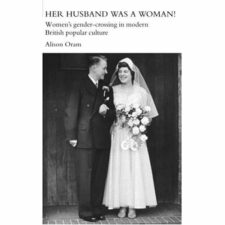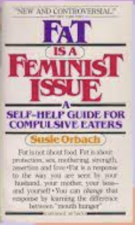The Woman Reader (2012) by Belinda Jack is a wide ranging account of women’s historical writing. In her review of the work, Bee Wilson focusses on the pertinent question it raises: ‘Why for millenniums did men try to control what women read?’[1] Other important questions are: what did women write to evade that control? What subversive methods did they use in their fiction to give it the appearance of suitability? What did women do to ensure that they and their feminist works were published? One response was producing overtly ‘suitable’ and covertly feminist fiction. If the men to whom Jack refers had known how women’s literature would progress they would have been even more concerned. In particular, historical fiction has developed in way that threatens traditional ways of looking at women’s role.
Philippa Gregory refers to herself as a feminist writer[2], and her historical and contemporary work give abundant clues to her feminism. Her recently published selection of three historical essays, non-fiction accounts of the women in her fictional accounts of the ‘wars of the cousins’ reveals her method, which is focussed on writing women back into history.[3] Zoe Fairbairns is a feminist writer who, while not having made a name as an historical writer has written a feminist historical saga. Stand We at Last (1983) is a feminist approach to British women’s history from the 1850s to the 1970s. Benefits (1979), newly published as an ebook, presents a chilling account of women’s position in the political world of the 1970s, which still resonates with the 2000s. Katharine McMahon’s historical novels are rich feminist perspectives on women and medical practice in World War 1 in The Rose of San Sebastopol (2007) and past legal practice in The Crimson Rooms (2009).
Of the three, Gregory and McMahon are the identifiable writers of feminist historical novels. Gregory is also the most well-known, mostly through her historical work but also through contemporary novels such as The Little House (1998). Fairbairns’ work is predominantly contemporary. However, Stand We at Last provides a compelling and accessible introduction to the body of her feminist work. Each writer has used historical fiction in a way that undermines the control of women’s reading. They have produced work that, while ostensibly is safe because it is ‘women’s fiction’, questions women’s place in history. Historical novels have had a mixed reception, not all of it respectful. Again, such a reputation has added to the advantages a feminist writer can enjoy in her writing history. Each writer has written her history inspired by women’s role, actions, feelings and aspirations.
Gregory has rejected the traditional way of writing about historical events which either centres on men deemed to have made history or, if they focus on women, have seen them largely in a romantic role. Gregory writes about women as the makers of a history which exists in parallel with the history of men; links women on equal terms with men’s traditionally superior role; or highlights the disadvantages affecting women who, despite these, operate capably with intelligence and fortitude. The women are also often portrayed as manipulative, cruel, antagonistic to other women and veritable ‘lionesses’ on behalf of the men in their family – son, brother, husband or father. They also neglect, or are actively antagonistic, to daughters, sisters or mothers.
The lack of ‘sisterhood’ amongst the female protagonists raises the question: how feminist are Gregory’s historical novels? Firstly, Gregory places women at the centre of her work. In non-romantic work, this is an important feature of feminist fiction. Secondly, women are acting in as wide a community as the men with whom they are associated. The only activity in which they are not physically present is in battle. Admittedly this is a major portion of the lives of men: it was the work of kings, would-be kings and their supporters. However, while uninvolved directly in the wars to win land and crown women are also depicted in physical and life threatening battle. One of the most dangerous is their fight to bear a son. Gender controlled the means by which women and men fought for the crown or land. Gregory makes it abundantly clear that women’s dangerous role was to provide a male heir for either purpose. Women and men united in seeking advancement for their family. As individuals, women were pitted against each other, often as pawns of the male members of their family.
Gregory is writing historical fiction that is soundly researched and realistically charts the tempo of the times. However, by placing women at the centre of her work she provides a feminist account of that history. Most importantly, Gregory graphically illustrates the discrimination against women that is the foundation to the history she writes.
Fairbairns’ Stand We At Last has been described as ‘a family saga’ and an early paperback edition cover features a bonneted woman in 1800s dress, clearly defining the novel as historical fiction. However, the novel is a strong feminist account of women’s lives. The issues that are familiar in novels about women, sexuality, marriage, motherhood and death are seen through a feminist prism. Like Gregory, the discrimination that features in women’s ‘normal’ is shown in its sometimes brutal reality. Explicit feminist issues are also raised in Stand We At Last. Women’s suffrage; their right to land ownership; implementation of the Contagious Diseases Acts, which becomes a personal as well as public issue for some of the protagonists; middle class women’s move into paid work; women as colonists; sexual freedom and sexism in a university environment; abortion; and the 1970s women’s movement.
Women in this contemporary novel also deal with the consequences of war. A young wife dies as the result of syphilis her husband catches in the army. Another is an oysterseller at the army barracks in the 1860s. She bears a child to a man whose comfortable lifestyle dismisses marrying her. Although the consequences are not as severe, the First World War creates the environment in which a young woman loses her virginity to a man who is joining up. In the Second World War women are depicted working on the land; caring for injured male family members; and dying on the home front.
McMahon focuses on professions such as the law and medicine and depicts the irrationality of the discrimination women suffered, concentrating on the early years of each profession. In her blog she notes that her type of historical fiction is sometimes criticised because it does not ‘take real people… put[s] words into their mouths, and [try] to work out how the past would have been for them’. She says ‘My type of historical fiction takes real events…and tells a fictional story about fictional characters, but with an authentic (whatever that means) historical setting’. Significantly, in the context of writing about the way in which feminist writers use historical environments to project feminist arguments in an acceptable way, she goes on to argue: ‘But do not dismiss. One type of historical fiction is neither more nor less valuable and fun than the other.’
McMahon’s comment makes a salient point about the three types of historical novel covered here. They are ‘fun’ to read. At the same time the feminist authors are writing about topics which are clearly not ‘fun’: discrimination against women in their private and professional lives in the past. That the past resonates with the sexism women encounter in contemporary society makes the historical novel an excellent vehicle for making feminist arguments in a form in which thoroughly undermines the men who wanted to control women’s reading.
Robin Joyce (c) November 2012
Robin Joyce’s PhD thesis is entitled ‘The Troublesome Woman: A Study Barbara Pym’s Novel and Short Stories’. She began her academic life as an historian, covering the period in Australia’s history when women fought for the vote. In particular, Robin identified women’s early activism in the Australian Labor Party (ALP) and trade unions, concentrating on women such as Cecilia Shelley and Jean Beadle – ‘the Grand Old Woman of Labor.’

![0330282263[1]histnovelsrrj.dec12](http://womenshistorynetwork.org/blog/wp-content/uploads/2012/12/03302822631histnovelsrrj.dec129.jpg)

